Dao Yin Nei Gong
Chinese health gymnastics (Dao Yin in Chinese) is a type of Qi Gong focusing on standing postures, soft, flowing movements and stretching. This type of Qi Gong have roots far back in time and is documented in China as early as 300 B.C. Qi practice helps you to discover and strengthen your inner power in standing positions, to explore and express this inner power in movement which increases the flow of blood end energy in the body, and allows you to release blockages and return to you natural agility through the practise of various stretching exercises.
Qi 气
There is an abundance of energy around and inside us. This Qi Gong is not about storing more energy in the body, keeping it – rather, it is about making energy flow, releasing stuck energy, and increasing the ability to sense and interact with energy. Qi is Chinese for the vital life force that flows everywhere and in everything. Gong means work and also skill so Qi Gong is energy work or life force work in English.
Historical perspective
There are three different major contexts where Qi Gong practices originated (which is a term coined in the 50’s to indicate their common ground).
The medical background.
Chines doctors in ancient times where in charge of keeping people healthy in a certain area. As long as they were healthy people paid a regular tribute to the doctor similar to an insurance. If they got sick, they stopped paying and where entitled to the doctors attention. Hence there was a strong incentive for the doctors to keep “his” people in good health and they started to investigate how this could be achieved. These investigations led to certain dietary observations but they also noticed that animals, who were rarely sick, naturally did certain stretching movements and they began to experiment with them to see if a similar effect could be observed in humans. Qi gong systems such as “the five animal frolics” and “the eight section brocades” are examples of such Qi Gong exercises that have influenced almost all modern versions of Qi Gong.
The martial arts background
Many who starts to practice martial arts do it to improve their health or to become stronger mentally and physically. Before it is possible to practice martial arts movements the body must be in reasonable shape, hence foundational practice has always been an important part of practicing martial arts. Chinese martial arts always acknowledge the idea of an internal level where Qi, intention and various other mental faculties are at the forefront. Hence for at least several hundred years various Qi Gong methods have been developed to cultivate these aspects.
The religious background
One of the key ideas of Daoist practice is to include both mind and body in the practice methods to become a true man. For example, Zhuang Zi ,one of the most influencial Daoist texts, talks about “breathing from the heels”, “bear hanging” and “bird stretching”. Hence Daoist hermits and scholars developed methods to aid the transformation of essence, qi and spirit that have greatly affected Qi Gong systems today.
Buddhists on the other hand developed Qi Gong methods to counteract the weakening effects of prolonged meditation. Examples of such methods are “sinew transformation” (Yi Jing) and “Marrow washing” (Xi Sui).
Key attitudes
In order to make good progress you need to allow the following attitudes to present in your practice.
Focus – to collect oneself and to gather into one is essential to be able to listen and to staty with the practice wholeheatedly.
Playfulness – Allow yourself to experiment with (play with) what you are learning. Play mean focus but a relaxed and interested focus. Playfulness also means that it is OK to fail, to learn from the failure and to try again.
Listening – Listening is a key aspect of learning and investigating. By listening to yourself, to others and to the world around you your experience will always be fresh and growth will lack limit.
Relaxation – Relaxing means to allow things to happen rather than forcing them. As your practice progresses and deepens it will become more and more subtle. Tension will cut you off from these subtleties but if you relax, you can listen more effectively.
Curiosity – Allow yourself to experience things as if it was the first time. Keeping this curious beginners mind allows you to stay open to your experiences and to learn from them. When there is curiosity there is listening and playfulness comes naturally.
Wholeheartedness – Be with your experience fully. By engaging practice with your body, mind and heart you avoid bypassing areas of yourself that you need to bring into awareness. Playfulness is a key to wholehearted living and wholehearted practice.
Indications of correct practice are and increase over time of joy, spontaneity, deepened perception, synchronicities, health, and energy (power) in your life. Sometimes there might be a release of a blockage which could bring feelings of sadness and pain but once that blockage has dissolved those feelings should disappear as well. If they do not, meditative work and psychotherapy are excellent complements to Qi Gong practice that could greatly help you work through these things and make progress.
Entering stillness
Ru jing or entering stillness is key to make progress in Qi Gong practice. This stillness is not a stale state but a vibrant aliveness and openness full of potential. The Wu Ji posture is especially conducive to learn this skill.
Energies of heaven earth and man (Tian Qi, Di Qi, Ren Qi)
This Qi Gong is about harmonizing and reuniting man with heaven and earth (Tian Di Ren He Yi – heaven earth and man unite/harmonize as one).
These 3 types of Qi are fundamental to Qi Gong practice and everything else in Qi gong work is based on them. One of the key discoveries of the ancient Qi gong practitioners was that these three types of energy could be affected by movement and intention. This discovery forms the basis of Qi Gong practice today. We use the coordination of intent, breath and movement to drive Qi. The types of movements that the ancients found to be most beneficial and effective in driving Qi are turning, twisting, stretching and flowing. The resulting movements resemble clouds moving in the sky and water running down a mountain.
Heavenly energy 天气
Heavenly energy moves from up to down. It is like a shower or light summer rain and is cleaning your energy field and leaves you refreshed.
Flavors: Sky, Sun, Moon, Stars
Earth energy 地气
Earth energy moves from down to up and is nourishing, strengthening, and empowering.
Flavors: Earth, lake, mountain, river, rock
Man energy 人气
The energy of living beings is characterized by circulation and is invigorating and healing.
Flavors: Heart, Dan Tian.
There are two circulations of energy that are of primary focus in Qi Gong practice. The small heavenly circulation and the large heavenly circulation. Circulation can be be done in both directions but only one of them will be described below as they are the ones that are practiced first.
Small heavenly circulation is connecting the Ren and Du meridians of the front and back body respectively. Tongue against the upper palette and sinking the tail bone, lifting the perennium connects the meridians and then energy is circulated by a using intention, breath and movement.
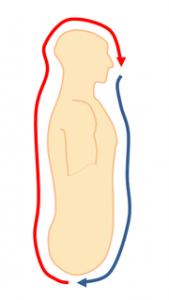
Large heavenly circulation – extends the small heavenly circulation by circulating energy into the other energy meridians which flow around the torso and out into the arms and legs. ; The qi comes down the undersides of the arms and from the top of the head, down the front of the body, insides of the legs, to the feet; then from the feet, up the Yang channels along the back of the limbs and torso, going out along the arms (upper surfaces).

2.The three centers and 6 gates
The three centers and 6 gates are important connections between the physical body and the guiding and expression of Qi (life force)
Sole of foot, Yong Quan (gushing spring)
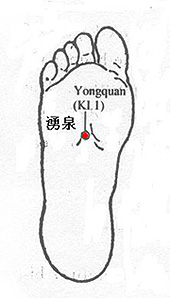
Yong Quan is (along with Hui Yin shown later) the primary connection to earth Qi. Connecting the flow of Qi between the Yong Quan and Hui Yin is a vital step in achieving the large heavenly circulation.
Center of palm, Lao Gong
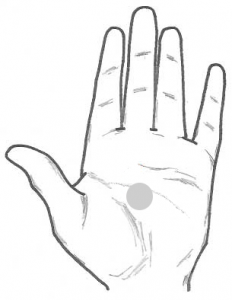
Lao gong is a very versatile center. It is used to connect to heavenly qi but can also be used to emit, receive or regulate any form of qi which is something we do in Qi Gong healing.
Top of the head, Bai Hui
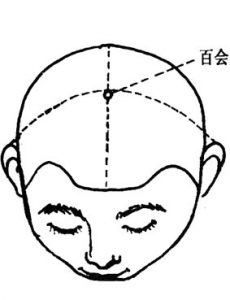
Bai Hui is the primary gate for connecting with heavenly energy.
Perineum, Hui Yin
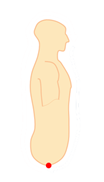
Hui Yin is (together with Yong Quan) the primary gate for connecting with earth energy.
Lover belly center, Xia Dan Tian

The Lower dan tian is perhaps the most important energy center in the body. The balance point of the physical body is located in the same spot. One of its primary functions is to transform essence (jing) into Qi and vice versa. It is the primary Qi center in the body. It is also related to intuition and whole body action. Hence we strive to act (move) from the lower dan tian in our practice.
Solar plexus / heart, Zhong Dan Tian
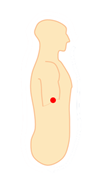
The middle dantian is concerned with transforming Qi into Spirit (Shen) and vice versa as well as regulating the health of the internal organs. It is also related to emotions and thoughts.
Head center, Shang Dan Tian
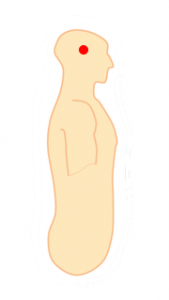
The upper dan tian is related to our consciousness and concerned with returning Spirit to the original source (Xu – emptiness in Chinese) and vice versa.